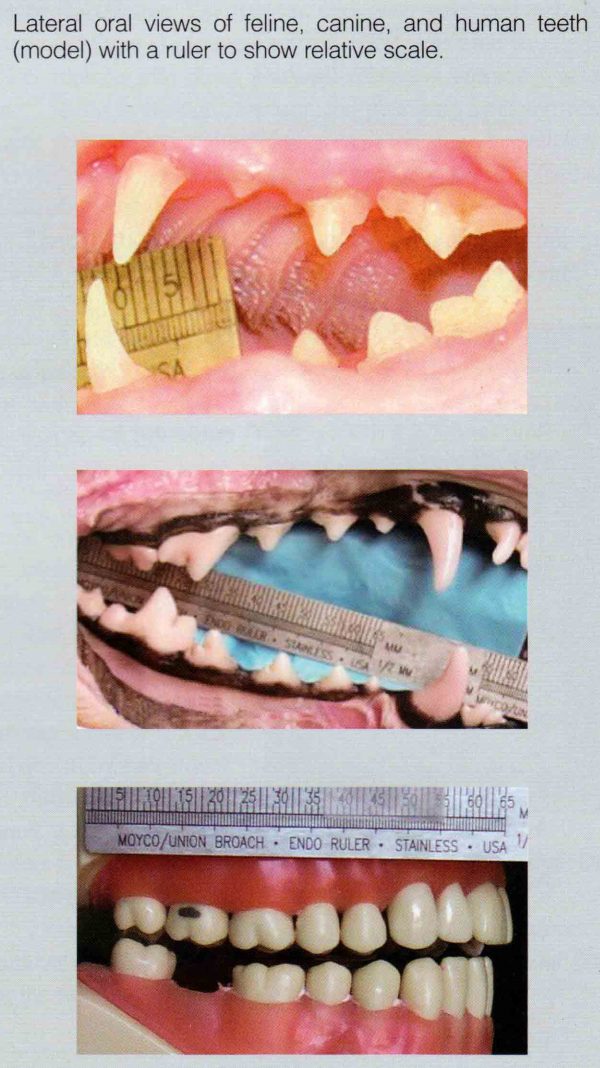Some of the most popular articles are when I relay what happens with our own animals and what we do, especially when you’re seeing the same things.
Most know raw meat naturally contains enzymes that break-down tartar build-up and clean teeth (read more here). So feeding raw should mean sparkly white teeth and not brown tartar or plaque covered teeth, right? You’d think.
Several weeks ago Sam (the spotted cat in the brochure) yawned and I took the opportunity to quickly look in his mouth at his teeth. He had tartar and plaque build up on his rear-most molars. I do give him bones to chew (usually duck bones, uncooked of course). But the problem teeth were the ones way in the back.
What that means is he isn’t using his rear molars to cut meat. See, cats and dogs don’t masticate their food (pulverize it with flat molars before swallowing like humans do). Cats and dogs use their rear teeth to cut meat into chunks that they then swallow whole. Watch your pet eat kibble (dry food). They’ll either swallow it whole or cut it in half then swallow it. It’s not a chew to a mush/paste like we do. Kibble doesn’t clean a dog’s or cat’s teeth anymore than eating a highly processed carbohydrate-laden food cleans our teeth. In other words, eating chips isn’t a substitute for brushing.
I usually get Sam to use his rear teeth by giving him raw duck bones to chew. He eats the cartilage and gnaws off all of the little pieces of meat left on the bone. But the weather’s been hot here and he doesn’t like going into his catio when it’s hot — bone chewing is a messy ordeal in the house. Sometimes I give him some of our custom jerky, but his digestive system is sensitive, so I can’t give him too much or he gets clogged up.
What I did for Sam was a solution we use frequently when we see tartar: chunky food. When a cat eats too much small grind you can see tartar and plaque build up on the cutting teeth because they’re not used! Your dog or cat will lap-up the ground meat and swallow it whole with very little or no ‘chewing’. By giving them chunks they’re forced to use those rear teeth to cut the meat in order to swallow it. When that happens there’s a scraping and the natural enzymes in the meat do their job. After about a week of adding some chunk to Sam’s food, sparkly white again. No expensive vet visit or hazards of hazards of anesthesia to get pearly whites.
How can you do this yourself? We’re offering the same solution we use for Sam to you right here.

In recent years, pet owners have become increasingly concerned about the quality and nutritional value of the food they feed their furry companions. One trend that has been gaining popularity is the use of hydrolyzed ...
Introduction As pet owners, we are constantly seeking ways to improve the health and well-being of our beloved furry companions. One aspect that has gained significant attention in recent years is the use of herbal ...
As we move through this holiday season and towards the new year, we’ve been stuffing our faces as we prepare to stuff our stockings! You might already be at the point where you are loosening ...